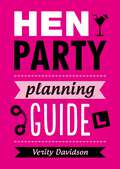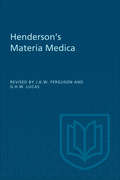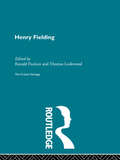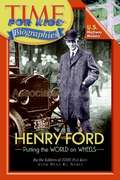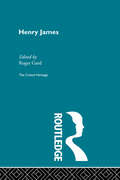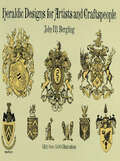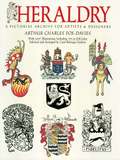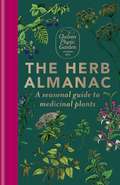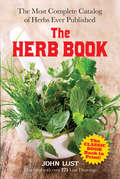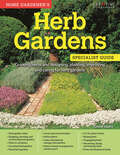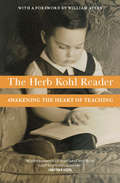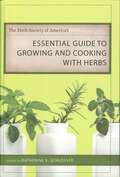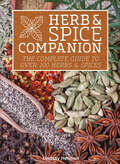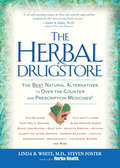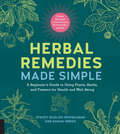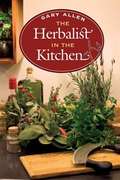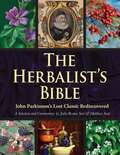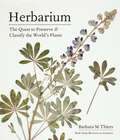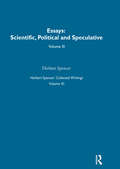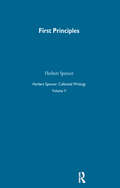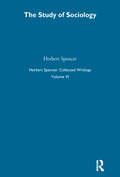- Table View
- List View
Hen Party Planning Guide
by Verity DavidsonHen parties come in every shape and size, but what unites them is that they are a wonderful opportunity to celebrate love and marriage, and to have an awesome party! This guide, packed with tips to help you plan an unforgettable bachelorette party to suit every budget, is the perfect antidote to planning disasters.
Henderson's Materia Medica
by James Ferguson George LucasNow in its third edition, this standard text meets the need for a single source of detailed information on the drugs in use in English-speaking countries. Dr. Henderson based his book on the British Pharmacopoeia, and the revisers have included the preparations in the fourteenth revision of the United States Pharmacopoeia, pointing out differences and similarities in terminology and usage. Drugs are arranged by English rather than Latin titles.
Henry Fielding: The Critical Heritage (The\wesleyan Edition Of The Works Of Henry Fielding Ser.)
by Ronald Paulson and Thomas LockwoodThe Critical Heritage gathers together a large body of critical sources on major figures in literature. Each volume presents contemporary responses to a writer's work, enabling students and researchers to read the material themselves.
Henry Ford: Putting the World on Wheels
by Dina El NabliThis is the fascinating story of Henry Ford whose childhood interests led him to leave the Ford family farm in Michigan in search of a career with machinery.
Henry James (Critical Heritage Ser.)
by Roger GardThis set comprises 40 volumes covering 19th and 20th century European and American authors. These volumes will be available as a complete set, mini boxed sets (by theme) or as individual volumes. This second set complements the first 68 volume set of Critical Heritage published by Routledge in October 1995.
Heraldic Design: Its Origins, Ancient Forms and Modern Usage
by Hubert AllcockThrough the ages, as warfare and competitive rituals became more elaborate, heraldry evolved into an exact art and science. Used to denote accomplishments as well as the genealogies of outstanding individuals and families, these symbols survived the way of life that created them.This remarkably rich sourcebook of royalty-free designs describes the origins and ancient forms of heraldic devices, shields, and trademarks. Over 500 black-and-white drawings trace the history and meaning of the coat, shield, crests, helmets, blazonry, and "attitudes and attributes" of symbols, with considerable attention given to devices such as beasts, monsters, and human and part-human figures. American, British, French, Russian, and other coats of arms are displayed, as are insignias of the Pope and clergy, state seals, and emblems of many modern institutions. In addition to personal, commercial, and family arms, chapters also provide information on the use of heraldry in advertising, brand-labeling, and related fields.A valuable visual reference for anyone interested in genealogy, these handsome images will add a touch of class to a variety of art and craft projects.
Heraldic Designs for Artists and Craftspeople (Dover Pictorial Archive)
by J. M. BerglingOver 1,400 heraldic designs depicting shields, coats-of-arms, seals, logos, flags, insignia, scrolls, mottoes, and many other motifs will add a touch of medieval flair or aristocratic ambience to almost any graphic project. Use royalty-free or as a source of design inspiration for an infinite number of print projects.
Heraldry: A Pictorial Archive for Artists and Designers (Dover Pictorial Archive)
by Arthur Charles Fox-DaviesRoyalty-free treasury of 393 full-color, 654 black-and-white illustrations. Authentic heraldic arms, lions, eagles, dragons, shields, crests, windows, etc. Also, arms of cities and towns, arms of Edward the Black Prince, Milton, Maximilian I, others. Add aristocratic flair, noble bearing to almost any graphic project. Publisher's Note. Captions.
The Herb Almanac: A seasonal guide to medicinal plants
by Chelsea Physic GardenA beautiful and accessible seasonal guide to herbalism from the historic botanic garden.Discover the best times of the year for growing specific healing herbs and also when and how to forage for wild medicine, such as water mint, St John's Wort, hawthorn berries and rosehips. Recipes are included for how to use these herbs, along with folklore stories from herb wives and hedge witches, the meanings behind their names and the history of how these natural medicines were discovered.There are plenty of tips for how to create your own medicinal herb garden, even with just a few pots, along with a biodynamic guide for sowing, planting and harvesting. Including detailed hand-drawn line illustrations to help deepen your understanding, The Herb Almanac is the perfect gift for any nature lover.CONTENTS INCLUDES:IntroductionIncluding using herbs as seasonally appropriate remedies and tonics, an overview of herbs in folklore, wild medicine, magic, superstition, ritual, tradition and literature and herbs in religion and floriography (the language of flowers)Gathering and Using HerbsIncluding safe, legal and successful foraging, a brief introduction to growing your own herbs and preparing, drying and preserving herbsWitches' Brews: Poisonous Plants Including an overview of herbs with interesting stories that cannot be easily used, e.g. wormwood, hemlock and mandrakeHerb EncyclopediaIncluding detailed information on over 50 different herbs
The Herb Almanac: A seasonal guide to medicinal plants
by Chelsea Physic GardenA beautiful and accessible seasonal guide to herbalism from the historic botanic garden.Discover the best times of the year for growing specific healing herbs and also when and how to forage for wild medicine, such as water mint, St John's Wort, hawthorn berries and rosehips. Recipes are included for how to use these herbs, along with folklore stories from herb wives and hedge witches, the meanings behind their names and the history of how these natural medicines were discovered.There are plenty of tips for how to create your own medicinal herb garden, even with just a few pots, along with a biodynamic guide for sowing, planting and harvesting. Including detailed hand-drawn line illustrations to help deepen your understanding, The Herb Almanac is the perfect gift for any nature lover.CONTENTS INCLUDES:IntroductionIncluding using herbs as seasonally appropriate remedies and tonics, an overview of herbs in folklore, wild medicine, magic, superstition, ritual, tradition and literature and herbs in religion and floriography (the language of flowers)Gathering and Using HerbsIncluding safe, legal and successful foraging, a brief introduction to growing your own herbs and preparing, drying and preserving herbsWitches' Brews: Poisonous Plants Including an overview of herbs with interesting stories that cannot be easily used, e.g. wormwood, hemlock and mandrakeHerb EncyclopediaIncluding detailed information on over 50 different herbs
The Herb Book: The Most Complete Catalog of Herbs Ever Published
by John Lust"I have an old copy of this book that I've had for years and would never let go of, no matter how many times I moved and thinned out my books. This is a re-release and I'm really happy to see it back in print. Part two of the book is the real treasure. It is an alphabetical list of herbs that gives detailed information about their properties, including any cautions required." — Lora's Rants & ReviewsAlso known as "The Natural Remedy Bible," The Herb Book provides a comprehensive resource for building a livelier, healthier, happier life. More than 2,000 listings offer remedies for ragged nerves, nightmares, and coughing fits as well as suggestions for adding spice to recipes, coloring fabrics, freshening breath, and a host of other benefits. Complete and concise descriptions of herbs, illustrated by more than 275 line drawings, offer the most comprehensive catalog of "miracle plants" ever published. Written by an expert and pioneer in the field, this easy-to-use reference features three parts. The first presents introductory historical information and background for using the rest of the book. The second part features individual numbered listings of medicinal plants with their botanical descriptions and uses. The third part emphasizes the variety of uses for the plants listed in Part 2, including mixtures for medicinal treatments, nutritious and culinary plants, cosmetic and aromatic purposes, plant dyes, and other applications. The book concludes with a captivating look at plant-related astrology, lore, and legends.
Herb Gardens: Growing herbs and designing, planting, improving and caring for herb gardens (Home Gardener's)
by David SquireThe essential guide to growing herbs and designing, planting, improving, and caring for herb gardens. Herbs are a sheer joy. What else gives so much pleasure to the eye, nose, taste buds, and spirit? Sitting in a garden on a summer&’s evening surrounded by herbs—the visual delight of the flowers and the scent wafting by on the warm air—is unbeatable. This book provides a comprehensive guide to choosing and growing herbs. Concise, easy-to-use reference guide Expert advice about herb-garden design Packed with practice, step-by-step instructions Includes an A-Z directory of culinary herbs How to grow herbs in borders and containers
The Herb Kohl Reader: Awakening the Heart of Teaching
by Herbert KohlThe best writing from a lifetime in the trenches and at the typewriter, from the renowned and much-beloved National Book Award–winning educator. In more than forty books on subjects ranging from social justice to mathematics, morality to parenthood, Herb Kohl has earned a place as one of our foremost &“educators who write.&” With Marian Wright Edelman, Mike Rose, Lisa Delpit, and Vivian Paley among his fans, Kohl is &“a singular figure in education,&” as William Ayers says in his foreword, &“it&’s clear that Herb Kohl&’s influence has resonated, echoed, and multiplied.&” Now, for the first time, readers can find collected in one place key essays and excerpts spanning the whole of Kohl&’s career, including practical as well as theoretical writings. Selections come from Kohl&’s classic 36 Children, his National Book Award–winning The View from the Oak (co-authored with his wife Judy), and all his best-known and beloved books. The Herb Kohl Reader is destined to become a major new resource for old fans and a new generation of teachers and parents. &“Kohl has created his own brand of teaching . . . [He is] a remarkable teacher who discovered in his first teaching assignment that in education he could keep playing with toys, didn&’t have to stop learning, and could use what he knew in the service of others.&” —Lisa Delpit, The New York Times &“An infinitely vulnerable and honest human being who has made it his vocation to peddle hope.&” —Jonathan Kozol
The Herb Society of America's Essential Guide to Growing and Cooking with Herbs: A Novel (Voices of the South)
by Katherine K. SchlosserFresh herbs offer a healthy and delicious way to spice up any meal, but growing and cooking with these delectable plants are endeavors fraught with uncertainty. What herbs will grow year-round on my kitchen windowsill? What foods complement rosemary? Which part of a lemongrass plant has the best flavor? Can I really eat the geraniums growing in my flower bed? This indispensable guide from The Herb Society of America takes the guesswork out of using herbs in the garden and in the kitchen by providing detailed information for cultivating a wide variety of herbs, along with easy-to-follow recipes that will surely impress even the most discerning palate. Ranging from Alliums (onions, chives, and garlic) to Zingiber (ginger), the volume's first section provides horticultural information for each of the sixty-three herbs found in the National Herb Garden's Culinary Garden, including common and botanical names, family, place of origin, hardiness, and general light and soil requirements. Botanical sketches accompany many of the entries. Each entry also includes a short history of the herb, gardening basics, and suggestions for using the herb in your kitchen. Culinary herbs without Generally Recognized as Safe (GRAS) Status are included in a separate section, with an explanation of their history and ornamental value. An informative introduction to this section compares several different definitions of the word herb, explains the advantages of fresh over dried herbs, describes the proper storage and use of spices, and suggests the best timing and methods for harvesting herbs. In the second part of the book, HSA members offer classic and creative recipes for more than two hundred dishes incorporating a variety of herbs. Learn how to use the aromatic and flavorful herbs in your garden to enhance stews and casseroles, create dips and pestos, and add a new dimension to your favorite liqueurs. Among the mouth-watering recipes featured are Lemon Basil Tea Bread, Chicken Linguine with Fennel and Tarragon, Five-Herb Pasta Salad, and Rosemary Fizz.The concluding section of the book contains a fascinating personal tour of the two-and-one-half-acre National Herb Garden, which lies in the heart of Washington, D.C., at the center of the United States National Arboretum, and of its various themed areas, including the Knot Garden, the Antique and Heritage Rose Garden, the Dye Garden, the Colonial Garden, the Native American Garden, the Beverage Garden, the Medicinal Garden, and many others. Complete plant lists accompany the description of each garden.Green thumbs and gourmets alike will find inspiration in these pages to look at herbs in new ways -- perhaps to see beyond their cupboards and into their own yards for ways to liven up their meals -- and will gain the knowledge and confidence to grow and use herbs effectively. More than a gardening book, more than a cookbook, The Herb Society of America's Essential Guide to Growing and Cooking with Herbs will prove to be an indispensable companion for all herb lovers.
Herb & Spice Companion: The Complete Guide to Over 100 Herbs & Spices
by Lindsay HermanYou can spice up your cooking when you learn how to grow, dry, store and use over 100 herbs and spices—from angelica to woodruff, allspice to vanilla.Herb and Spice Companion is your ultimate guide for using fresh and dried herbs and spices in the kitchen. Inside this handy book, get descriptions of more than 100 herbs and spices from around the world. Discover useful tips on storing and using spices to create innovative combinations of flavors. This is the essential guidebook to using herbs and spices to add flavor and depth in your cooking. From basil to beebalm, from lavender to lemon verbena, learn all of the interesting aspects of your herbs, including their rich history, how to grow, harvest, and dry them, and even their unique medicinal uses. This is a must-have for anyone’s cookbook library.
Herbaceous Perennial Plants: A Treatise on their Identification, Culture, and Garden Attributes
by Allan ArmitageThe third edition of the comprehensive—and entertaining—gardening reference by the master horticulturalist.This is the long-awaited third edition of Allan Armitage’s masterpiece on garden perennials. Armitage’s extensive traveling, teaching, and trialing experiences provide a depth of understanding of the best ornamental perennials for North American gardens unparalleled by any other garden writer. One of the most definitive and conclusive books written about perennials, the first edition was designated as one of the best seventy-five books written in the last seventy-five years by the American Horticulture Society. Now the third edition of “The Big Perennial Book” (as it is fondly referred to by many practitioners) describes 3,600 species in 1224 pages. More than three hundred color photos complement detailed text filled with the author’s pointed observations of plant performance, cultivar selection, and current taxonomy. In addition, his trademark wit and passion are both in abundance, making reading as pleasurable as it is informative.
The Herbal Drugstore: The Best Natural Alternatives to Over-the-Counter and Prescription Medicines!
by Linda B. White Steven Foster The Staff Of Herbs For HealthEase Symptoms, Fight Disease, and Supercharge Immunity--All Without Drugs or Chemicals! You're about to enter a completely different kind of drugstore. One where herbal medicines are offered right alongside conventional pharmaceuticals. Where bottles of feverfew stand next to bottles of aspirin, and echinacea has its place among other cold and flu remedies.The Herbal Drugstore is the only place where you can compare mainstream drug treatments and their herbal alternatives for close to 100 common health problems. You'll find herbs that have the same healing powers as many prescription and over-the-counter medications--only they're cheaper and gentler, with few or no side effects.Whether you need fast first-aid or long-term relief, The Herbal Drugstore has a remedy for you. Here's just a sampling:* Immobilized by arthritis? Rub on capsaicin cream, a natural pain reliever made from hot peppers* Can't sleep? Start snoozing with valerian--it's as effective as Valium, but it isn't addictive* Want to lose a few pounds? Get a helping hand from psyllium, an herbal alternative to appetite suppressants* Feeling stressed? Calm jangled nerves with ginseng--it won't undermine alertness* Battling bronchitis? Clear up that cough with licorice, a natural expectorant* Need help with high blood pressure? Turn to hawthorn--it has much in common with beta blockers, except for the side effectsThe Herbal Drugstore features these and many more herbal remedies--712 in all! They're profiled right next to their pharmaceutical counterparts, so you can make your own comparisons and decide which treatments are best for you.
Herbal Medicine Natural Remedies: 150 Herbal Remedies to Heal Common Ailments
by Anne KennedyYou don't have to be a doctor to make effective herbal medicine. With hundreds of different herbs and remedies out there, making herbal medicine can be overwhelming. Thankfully, Herbal Medicine Natural Remedies acts as the perfect salve, making things simple with 150 easy-to-follow recipes for highly effective herbal medicines. Discover natural ways to treat headaches, coughs, colds, hangovers, and more that don't carry the same risk of side effects that many pharmaceuticals do. Never made your own herbal medicine? Start things off right with helpful lists of must-have tools, plus important safety tips. Herbal Medicine Natural Remedies includes: Herbal medicine for common ailments—Learn to make 150 different herbal remedies designed to help treat 75 different health issues. Herb profiles—From agrimony and chamomile to licorice and skullcap, 50 of the most common, useful, and healing herbs are detailed. Herbalism 101—Complete guides to collecting the right cookware, herb safety, and more help you jump straight in regardless of your experience level. Herbal medicines made easy—what a relief!
Herbal Remedies Made Simple: A Beginner's Guide to Using Plants, Herbs, and Flowers for Health and Well-Being
by Stacey Dugliss-Wesselman Susan GreggA do-it-yourself guide to natural healing products, with instructions on choosing plants and recipes for creating alternative wellness solutions at home.Natural alternatives to traditional medicines are everywhere, even right outside your door! Herbal Remedies Made Simple is an easy and fun way to learn about the many different healing herbs that grow all around us but we seldom see. The best part: once you’re familiar with the natural healing herbs around you, Herbal Remedies Made Simple provides you with instructions on creating your own DIY herbal remedies at home.This unique guide book splits its pages in half. The top halves of the pages detail different remedies and recipes for health, personal care, and home care. The bottom pages provide reference material on the herbs used in the project above; detailing the plant’s medicinal properties and how best to work with that herb.Some of the therapeutic recipes within:Lavender cleanserRose water tonerChamomile facial exfoliantComfrey joint and bruise salveNerve tonic tinctureTeas for headaches, stress, sleep, and coldsJoint and muscle soakFully photographed and illustrated, this is the perfect guide for the beginning herbal practitioner.
The Herbalist in the Kitchen (The Food Series)
by Gary AllenThe foodie's ultimate herbal encyclopedia Created as the ideal reference for anyone with a serious interest in cooking with herbs, spices, or related plant materials, The Herbalist in the Kitchen is truly encyclopedic in scope. It provides complete information about the uses, botany, toxicity, and flavor chemistry of herbs, as well as a listing for nearly every name that an ingredient is known by around the world. Even including herbs and spices not yet seen in the United States (but likely to be featured in recipes for adventurous cooks soon), The Herbalist in the Kitchen is organized into one hundred and four sections, each consisting of a single botanical family. The book provides all available information about the chemical compounds responsible for a plant's characteristic taste and scent, which allows cooks to consider new subtleties and potential alternatives. For instance, the primary flavoring ingredient of cloves is eugenol; when a cook knows that bay leaves also contain eugenol, a range of exciting substitutions becomes clear. The Herbalist in the Kitchen also provides guidance about measuring herbs, enabling readers to understand the dated measuring standards from antique cookbooks. A volume in The Food Series, edited by Andrew W. Smith
The Herbalist's Bible: John Parkinson's Lost Classic Rediscovered
by Julie Bruton-Seal Matthew SealA lost classic of Western herbalism-rediscovered and restored with 200 full-color images.Herbalist to King Charles I, John Parkinson (1567-1650) was a master apothecary, herbalist, and gardener. Famous in his own lifetime for his influential books, his magnum opus, the Theatrum Botanicum, was published in 1640 and ran to 1,766 large pages. The sheer scope and size was perhaps to prove the book's downfall, because while it was much revered-and plagiarized-it was never reprinted and, centuries later, has attained the status of an extremely rare and valuable book. Parkinson was writing at a time when Western herbalism was at its zenith, and his skills as a gardener (from his grounds in Covent Garden) combined perfectly with his passion for science, observation, and historical scholarship.In the The Herbalist's Bible, Julie Bruton-Seal and Matthew Seal have beautifully combined selections from Parkinson's book with their own modern commentary on how each plant is used today to create a truly one-of-a-kind, comprehensive collection of herbal information old and new. Parkinson's clear and lively description of a chosen plant's "vertues" or healing properties side-by-side with the editors' notes-including copious herbal recipes-make this the perfect book for students and practitioners of herbalism, historians, and gardeners, all of whom will welcome this restoration of Parkinson's lost classic.
Herbarium: The Quest to Preserve and Classify the World's Plants
by Barbara M. ThiersA treasury like no other Since the 1500s, scientists have documented the plants and fungi that grew around them, organizing the specimens into collections. Known as herbaria, these archives helped give rise to botany as its own scientific endeavor.Herbarium is a fascinating enquiry into this unique field of plant biology, exploring how herbaria emerged and have changed over time, who promoted and contributed to them, and why they remain such an important source of data for their new role: understanding how the world&’s flora is changing. Barbara Thiers, director of the William and Lynda Steere Herbarium at the New York Botanical Garden, also explains how recent innovations that allow us to see things at both the molecular level and on a global scale can be applied to herbaria specimens, helping us address some of the most critical problems facing the world today. At its heart, Herbarium is a compelling reminder of one of humanity&’s better impulses: to save things—not just for ourselves, but for generations to come.
Herbert Spencer: Collected Writings
by Herbert SpencerHerbert Spencer (1820-1903) was regarded by the Victorians as the foremost philosopher of the age, the prophet of evolution at a time when the idea had gripped the popular imagination. Until recently Spencer's posthumous reputation rested almost excusively on his social and political thought, which has itself frequently been subject to serious misrepresentation. But historians of ideas now recognise that an acquaintance with Spencer's thought is essential for the proper understanding of many aspects of Victorian intellectual life, and the present selection is designed to answer this need. It provides a cross-section of Spencer's works from his more popular and approachable essays to a number of the volumes of the Synthetic Philosophy itself. Volume III.
Herbert Spencer: Collected Writings
by Herbert SpencerHerbert Spencer (1820-1903) was regarded by the Victorians as the foremost philosopher of the age, the prophet of evolution at a time when the idea had gripped the popular imagination. Until recently Spencer's posthumous reputation rested almost excusively on his social and political thought, which has itself frequently been subject to serious misrepresentation. But historians of ideas now recognise that an acquaintance with Spencer's thought is essential for the proper understanding of many aspects of Victorian intellectual life, and the present selection is designed to answer this need. It provides a cross-section of Spencer's works from his more popular and approachable essays to a number of the volumes of the Synthetic Philosophy itself. Volume V: First Principles.
Herbert Spencer: Collected Writings
by Herbert SpencerHerbert Spencer (1820-1903) was regarded by the Victorians as the foremost philosopher of the age, the prophet of evolution at a time when the idea had gripped the popular imagination. Until recently Spencer's posthumous reputation rested almost excusively on his social and political thought, which has itself frequently been subject to serious misrepresentation. But historians of ideas now recognise that an acquaintance with Spencer's thought is essential for the proper understanding of many aspects of Victorian intellectual life, and the present selection is designed to answer this need. It provides a cross-section of Spencer's works from his more popular and approachable essays to a number of the volumes of the Synthetic Philosophy itself. Volume VI The Study of Sociology.
